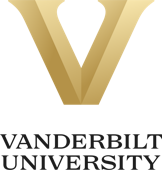The primary mission of the Bachmann Lab is to apply knowledge of the design rules for secondary metabolism at the chemical, biochemical and genetic levels toward the biosynthesis of "non-natural" compounds of high value to biomedical research and the clinic. Key to this program in "synthetic biology" is the dissection of the mechanisms by which life makes bioactive molecules in vivo. The lab is organized according to three interlocking research areas: Biosynthesis, Synthetic Biology, and Discovery. These subgroups each have basic research and applied components and overlap with one another both thematically and methodologically.
Biosynthesis
The focus of the biosynthesis research subgroup centers on investigating the biosynthesis of pharmacophores by microorganisms from a genetic to a chemical basis. In all cases, we target non-trivial biotransformations that have little or no precedent in prior research. To date, pathways have been targeted in the bacterial Order Actinomycetales (also called actinomycetes), one of the richest microbial sources of secondary metabololites.
Synthetic Biology
Synthetic Biology is a burgeoning field, the ambitious aim of which is to use the machinery of biological systems (DNA, RNA, proteins) for the production of synthetic compounds and materials of high value to research, medicine and human life. For small molecule synthesis, these methods offer totally new avenues for the production of compounds and an alternative to petrochemical-based chemical synthesis. We believe that the global societal impacts of synthetic biology will be far reaching in this century. The primary mission of the Bachmann lab is to apply this knowledge of the design rules for secondary metabolism at the chemical, biochemical and genetic levels toward the biosynthesis of "non-natural" compounds of high value to bio research and the clinic.
Drug Discovery
It is becoming increasingly apparent that natural products derived from microbes, plants and animals represent important contributors of chemical diversity for the development of sustainable drug discovery efforts. Brian Bachmann in his former (industrial) and current (academic) lab has developed a two-pronged approach for natural product discovery:
1. A strategy for leveraging microbial genomic sequence data to predict secondary metabolic potential of microorganisms and to utilizing these predictions to prioritize isolations, accelerate isolation and structural elucidations.
2. A strategy for integrating natural product discovery into contemporary high throughput screening technologies by A) rapid generation of natural product fraction libraries from unique biological sources and B) applied metabolomics technologies for the identification and discovery of antibiotic/cytotoxic compounds. Rapid identification of compounds correlated to a biological activity of interest drives the prioritization of a classic isolation/structure-elucidation cascade in the Bachmann lab.
Experience
-
–presentProfessor of Chemistry, Vanderbilt University
- Nashville, Tennessee, U.S.
- Website
- Article Feed
- Joined


